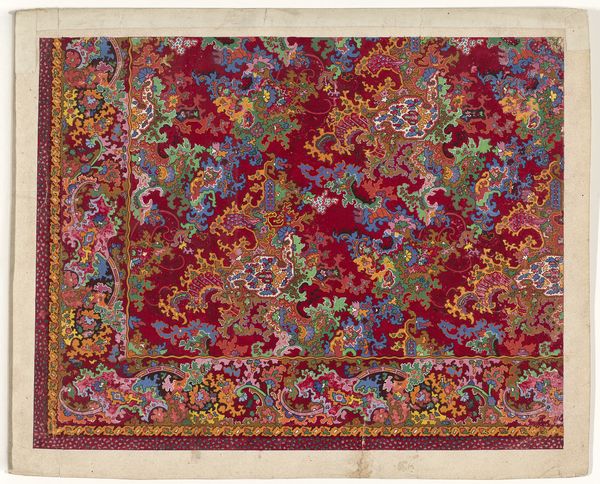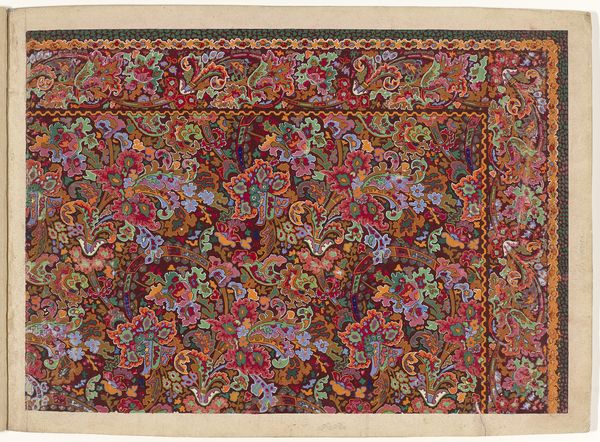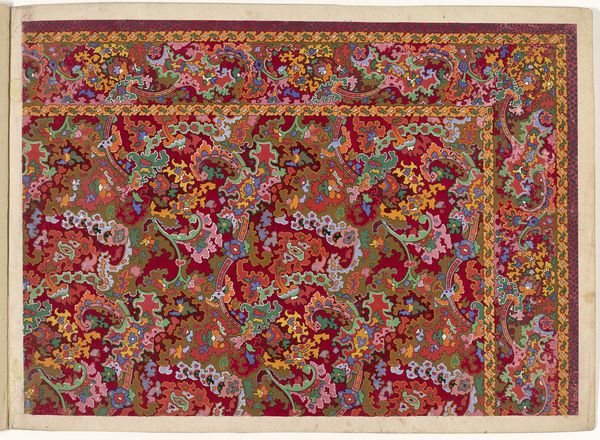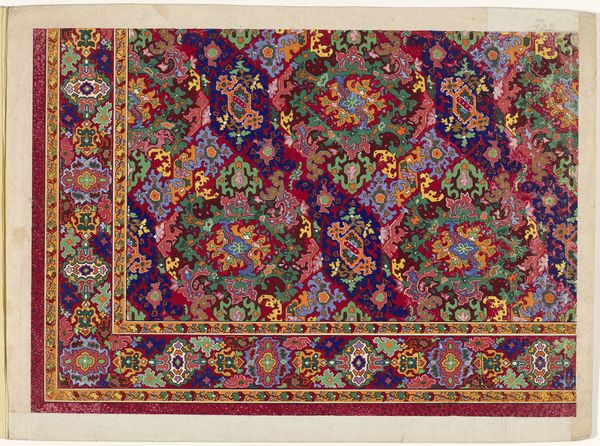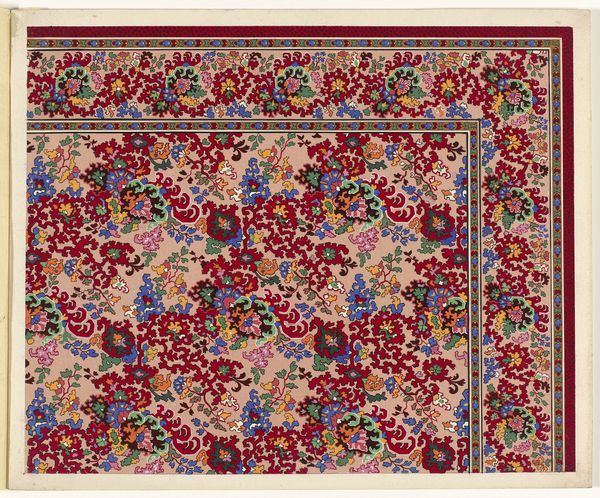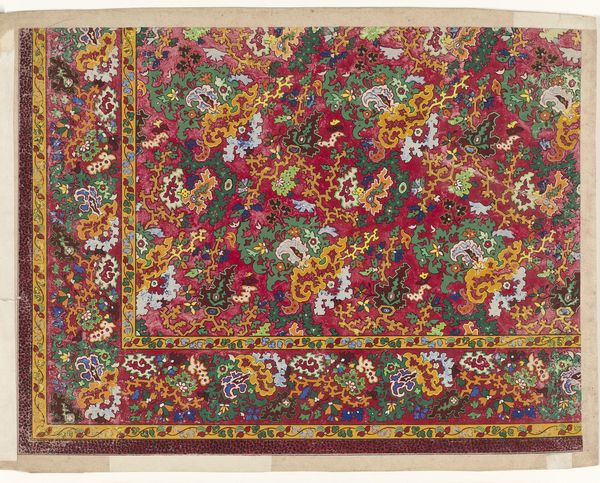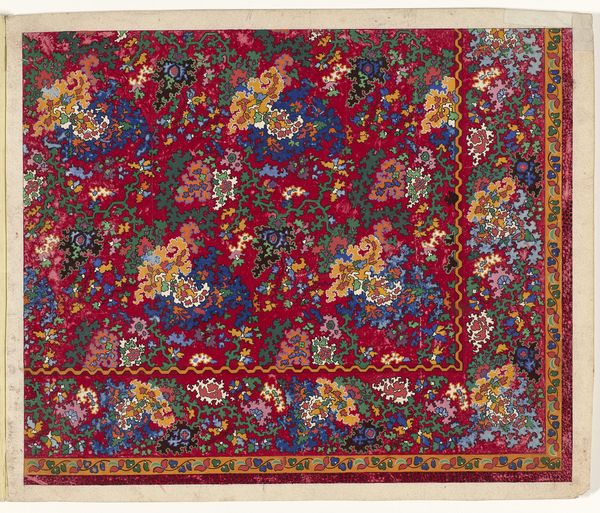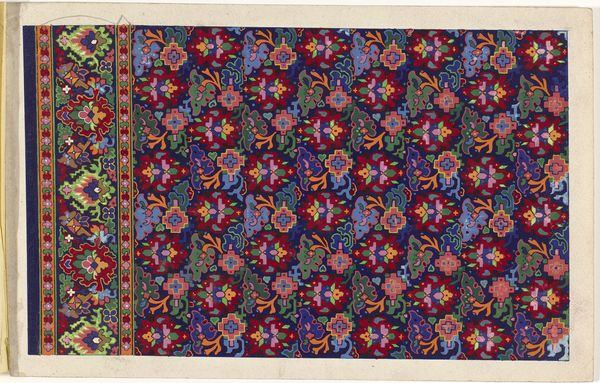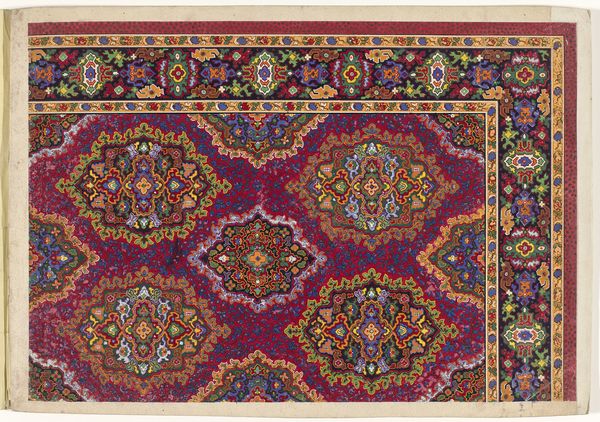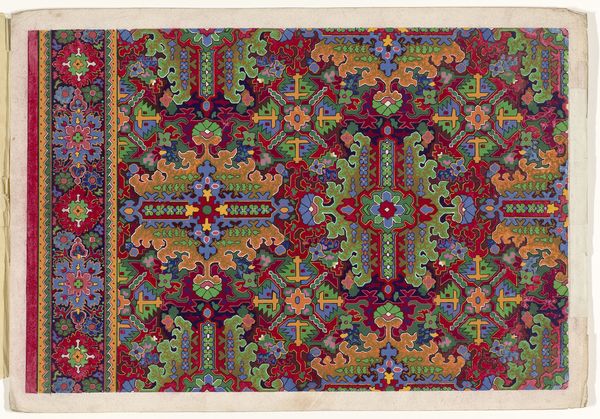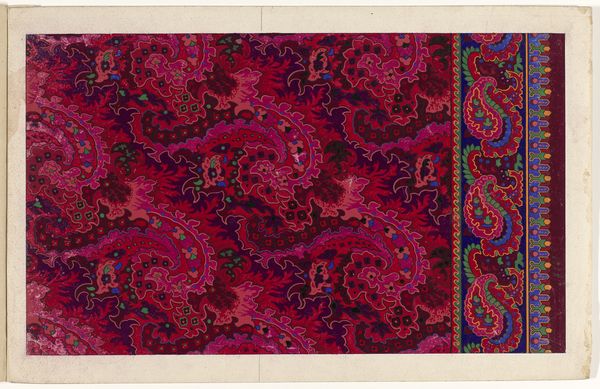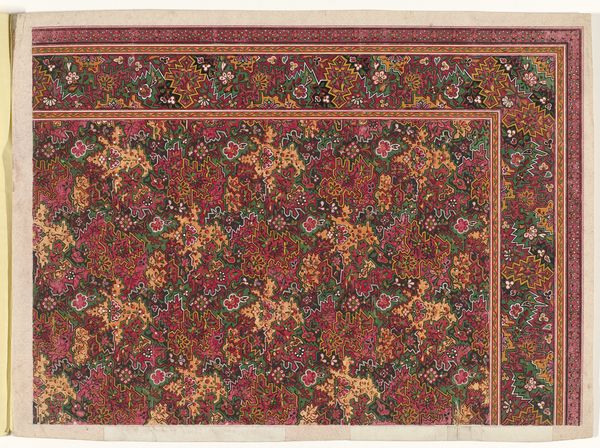
Dimensions: height 285 mm, width 342 mm
Copyright: Rijks Museum: Open Domain
Curator: Let’s examine this design for a carpet from around 1854 to 1864, attributed to an anonymous artist. The piece itself is a drawing intended for textile production. Editor: My first impression is that this piece has an intricate, almost dizzying quality. The density of the pattern and the riot of colors create a visually rich, but slightly overwhelming, effect. Curator: It's a wonderful example of the organic patterns favored during the Arts and Crafts movement. We see a desire to return to handcrafted production, opposing industrial manufacturing and championing traditional skills, and this resonates in this type of artwork as well. Editor: Absolutely. The composition is really quite masterful. Notice how the artist uses repetition and layering to create a sense of depth and movement. Despite the overall complexity, there’s a clear structure, based on floral motifs, driving the visual flow across the surface. Curator: It is also interesting to note the implicit politics in such artwork. Carpet design was a key way in which artists in Europe engaged with, and sometimes appropriated, patterns and motifs from Islamic art. Editor: That's an interesting observation. Looking more closely, I can see a possible dialogue between the formal, geometric qualities often associated with Islamic design, with a more fluid, naturalistic style typical to the European Arts and Crafts tradition. Curator: Indeed, it brings to the foreground issues of cultural exchange and appropriation inherent in the circulation of images. The emphasis on handicraft, here made visible by the level of design and artistic labour, can be seen to oppose to more exploitative conditions that went along with contemporary industrial textile manufacturing. Editor: And I appreciate how you bring the socioeconomic background and working environment into the visual space of this drawing. What I initially read as an aesthetically excessive arrangement gains significant depth with this insight into broader concerns of art, labour, and history. Curator: I’m struck by the ways that the image is involved in a much larger history, the complexity which such decorative designs might disguise. Editor: It's amazing how a seemingly simple carpet design can open up into such a wide range of interpretations. It shows you just how powerful visual forms can be when viewed through different lenses.
Comments
No comments
Be the first to comment and join the conversation on the ultimate creative platform.
